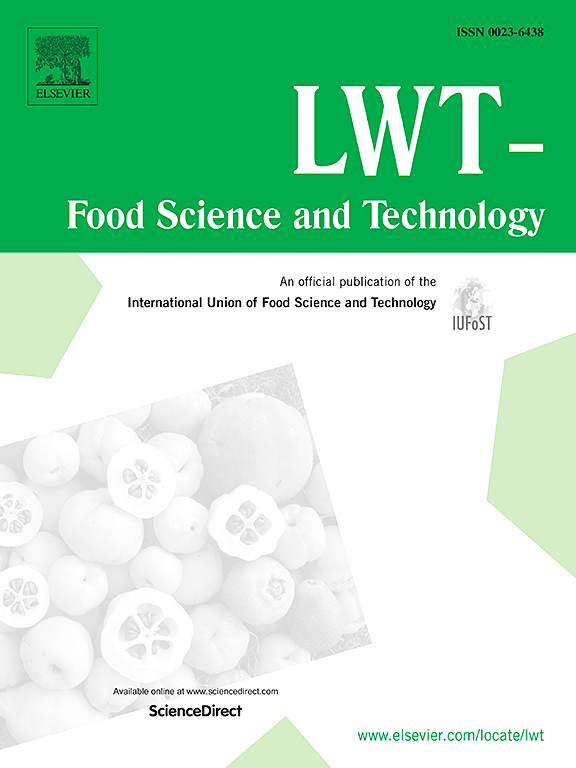Low-ester pectin effectively enhanced the thermal, rheological and structural properties of wheat dough relative to the high-ester pectin
IF 6
1区 农林科学
Q1 FOOD SCIENCE & TECHNOLOGY
引用次数: 0
Abstract
Studying the effects of pectin with different degree of esterification (DE) on dough properties can lay a foundation for regulating dough network structure and flour product quality through pectin. Thus, the effect of pectins with different DE on dough properties was compared. Compared with control dough, low-ester pectin (LEP) greatly improved the viscoelasticity of dough, significantly increased the enthalpy (from 1.51 to 1.75 J/g), hardness, chewiness, and the peak load (from 0.14 to 0.40 N) of dough, while decreasing the deformation (from 35.43 to 13.23 mm) of dough. Moreover, LEP significantly promoted the transformation of sulfhydryl groups to disulfide bonds (from 8.99 to 10.12 μmol/g). Compared with high-ester pectin (HEP), LEP increased β-sheet content by 34.21% and decreased fluorescence intensity from 1950.67 to 363.03, suggesting that structure stabilization of gluten was enhanced. SEM images also indicated that LEP was more conducive to maintaining the stability of dough structure. However, both LEP and HEP did not change the crystal structure of wheat starch in the dough. In summary, LEP improved dough structure more effectively, while HEP weakened dough structure. These results can provide a theoretical basis for regulating dough network structure and the quality of flour products through different pectins.
与高酯果胶相比,低酯果胶可有效提高小麦面团的热学、流变学和结构特性
研究不同酯化度(DE)的果胶对面团特性的影响,可为通过果胶调节面团网络结构和面粉产品质量奠定基础。因此,比较了不同酯化度的果胶对面团特性的影响。与对照面团相比,低酯果胶(LEP)大大改善了面团的粘弹性,显著提高了面团的热焓(从 1.51 J/g 提高到 1.75 J/g)、硬度、咀嚼性和峰值负荷(从 0.14 N 提高到 0.40 N),同时降低了面团的变形(从 35.43 mm 降低到 13.23 mm)。此外,LEP 还能明显促进巯基向二硫键的转化(从 8.99 μmol/g 提高到 10.12 μmol/g)。与高酯果胶(HEP)相比,LEP 使β-片含量增加了 34.21%,荧光强度从 1950.67 降至 363.03,这表明面筋的结构稳定性得到了增强。扫描电镜图像也表明,LEP 更有利于保持面团结构的稳定性。不过,LEP 和 HEP 都没有改变面团中小麦淀粉的晶体结构。总之,LEP 更有效地改善了面团结构,而 HEP 则削弱了面团结构。这些结果可为通过不同果胶调节面团网络结构和面粉产品质量提供理论依据。
本文章由计算机程序翻译,如有差异,请以英文原文为准。
求助全文
约1分钟内获得全文
求助全文
来源期刊

LWT - Food Science and Technology
工程技术-食品科技
CiteScore
11.80
自引率
6.70%
发文量
1724
审稿时长
65 days
期刊介绍:
LWT - Food Science and Technology is an international journal that publishes innovative papers in the fields of food chemistry, biochemistry, microbiology, technology and nutrition. The work described should be innovative either in the approach or in the methods used. The significance of the results either for the science community or for the food industry must also be specified. Contributions written in English are welcomed in the form of review articles, short reviews, research papers, and research notes. Papers featuring animal trials and cell cultures are outside the scope of the journal and will not be considered for publication.
 求助内容:
求助内容: 应助结果提醒方式:
应助结果提醒方式:


